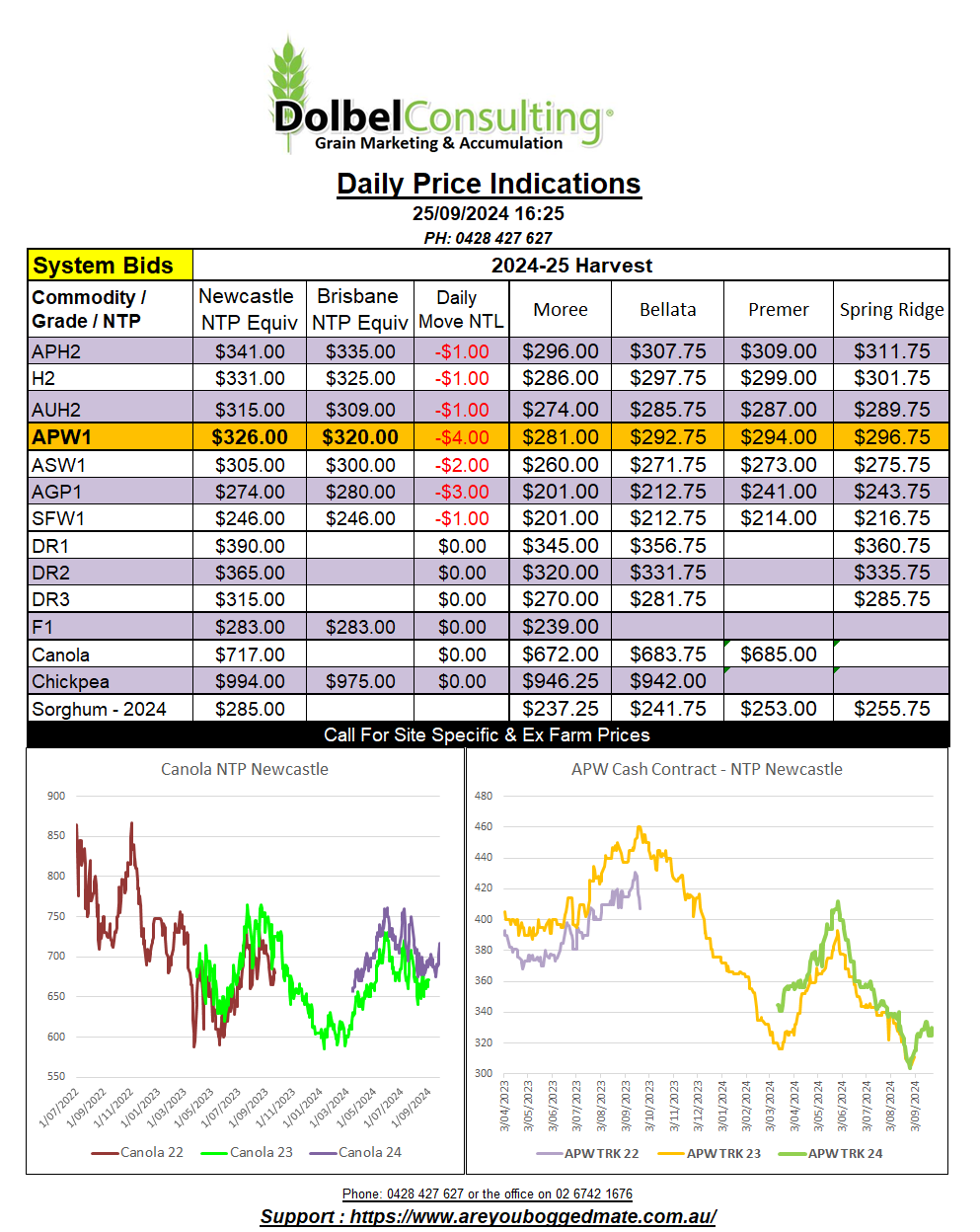25/9/24 Prices

Volatility in the Chicago soybean market was a feature of last nights session, the trade torn between weather concerns in S.America and harvest pressure in the USA. Combine this volatility with some recent wet weather in parts of Canada and the net result was further gains in Winnipeg canola. The upward momentum spilled over into Paris rapeseed futures, but the move there was a little more subdued compared to the Winnipeg contracts.
Brazil is expected to produce up to 20mt more soybeans in 2025 than this year, but the dry start already has a few punters wondering if this is a long shot. It appears the only part of Brazil seeing any rain is the exact part that the rain isn’t exactly needed. The far SE of Brazil is where the bulk of their wheat is produced, it’s not a huge amount, usually between 8-10mt. This year wheat sowing was hindered by flooding, and now that the headers are out of the shed the rain has picked up again. Over the last 14 days there’s been falls of 25-125mm of rain across the Brazilian wheat region of Parana and Rio Grande So Sul.
This may place Brazil on the importers list for some quality wheat to blend with local produce. Imports are usually acquired from Argentina but weather conditions there have also been less than ideal in 2024. Much of the western wheat belt of Argentina has seen just 40-60% of average rainfall over the last 30 days. Although yields in Argentina may be down on average, they should still have a crop to harvest with stock available for exports.
The winter wheat regions of Russia and Ukraine remain very dry. Some parts of the Volga valley seeing virtually no rain over the last 30 days. The 30 day anomaly now indicating just 20-40% of average rainfall across a large swath of Russia’s winter wheat districts. Russian farmers must be looking west in disbelief as flooding continues across central Europe. Parts of Czechia and Southern Poland have seen between 150-200mm over the last 14 days.
